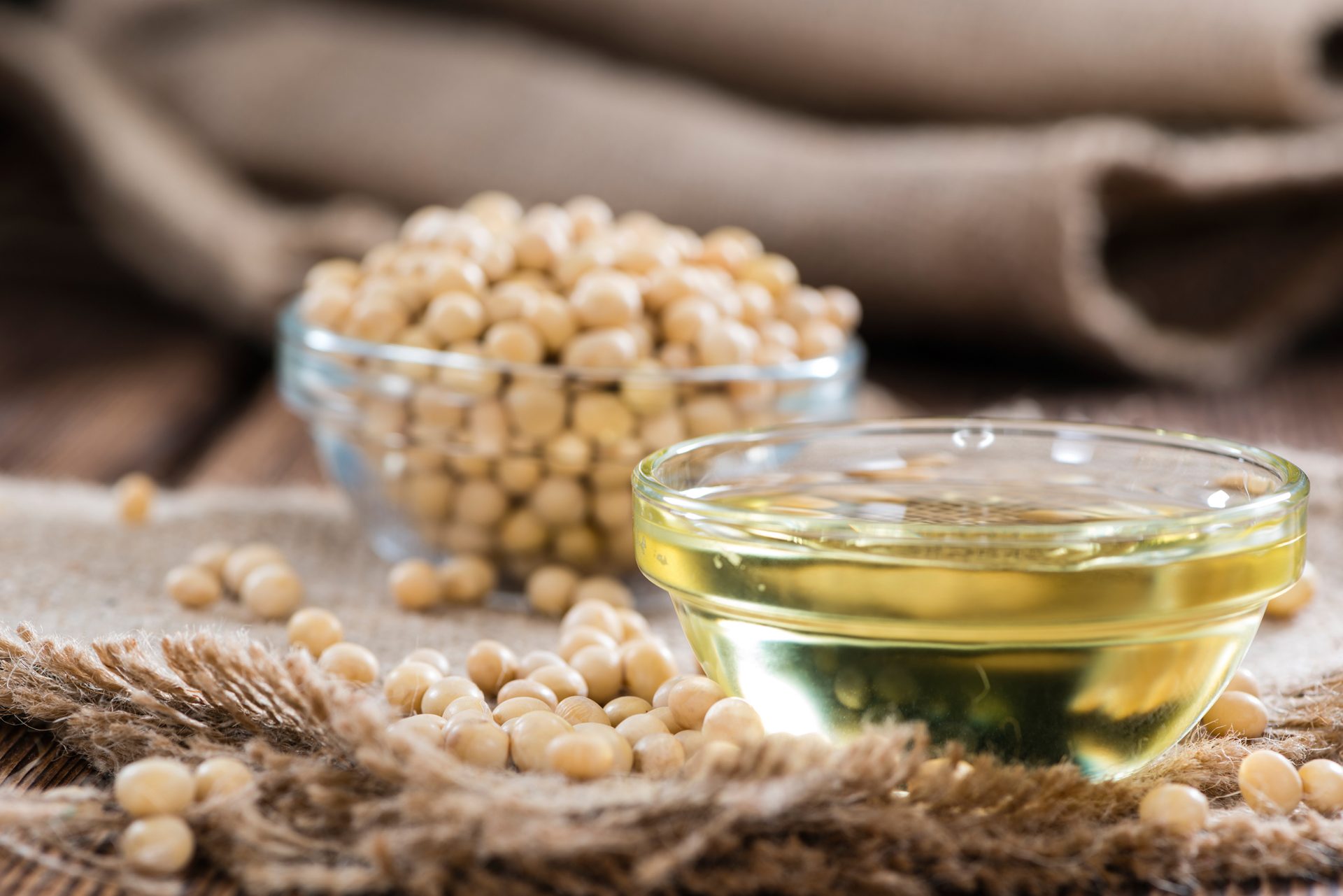

Quality Assurance of Soybean Oil Using NMR
Introduction
Emulsifiers play an important role across numerous industries, including agrochemicals, toiletries and cosmetics, food manufacturing, and pharmaceuticals. These commonly take the form of complex lipid mixtures. Since the relative proportions of different lipids in an emulsifier mixture determine the final properties, their value is increased by knowing the precise composition of lipids; this facilitates the use of lipid emulsifiers for specific functions and is also essential for ensuring the health and safety of consumers.
Although many available techniques have the potential to analyze lipid mixtures, none is ideal. Due to the limitations of individual methodologies, it is often necessary to employ a series of complementary methodologies to obtain the desired characterization. This can be time-consuming and wasteful. Furthermore, some of the required methodologies necessitate execution by skilled technicians.
The search for fast, reliable, and reproducible approach for accurate analysis of the lipid emulsifiers widely used in numerous sectors of industry has thus attracted much attention.
Application of Lipid Mixtures
Mixtures with high concentrations of monoesters and diesters, such as propylene glycol (1,2-propanediol) esters and mixtures of mono- and diglycerides, provide valuable functional emulsifiers1. Emulsifying agents work by forming a film around the dispersed globules in a mixture, preventing them from coalescing or by lowering the interfacial tension in a mixture. These actions are valuable for enhancing the mixing of two components with a natural tendency to separate. The market demand for these emulsifiers is increasing in both Europe and North America.
Propylene glycol monoesters are produced by esterification or interesterification of propylene glycol. They are widely used in the food industry to optimize the properties of a food product. For example, the addition of emulsifiers to ice cream promotes the destabilization of the emulsion during freezing2. By managing the amount and composition of the emulsifier added, the ice cream can be made with a consistency suitable for dispensing into cones, or it can be made firmer for scooping into balls. The addition of less than 0.3% of propylene glycol monoester is sufficient to inhibit recrystallization of ice in ice cream3.
Propylene glycol esters are also used in combination with diesters as emulsifiers for the baking industry to improve the behavior of bread and cake mixtures. The addition of such emulsifiers results in increased volume and uniform structure of cakes and improves the quality of bread dough by influencing dough strength and creating uniform crumb size2,4.
Several variables must be considered during emulsifier production in order to achieve the desired product characteristics. These include preparation methodology, the amount of emulsifier added, the chemical and physical characteristics of the phases forming the emulsion, and the presence of other functional components in the emulsion. It is thus important that an emulsifier can be accurately characterized to ensure that the desired features have been achieved.
Finding a fast, reliable, and reproducible approach for an accurate analysis of complex lipid mixtures of emulsifiers is crucial for the food and beverages, pharmaceuticals, personal care products, cosmetics, and agrochemicals industries.
Analysis of Lipid Mixtures
The composition and purity of emulsifiers used in the food industry are critical to their safety and performance. The increasing use of propylene glycol esters and mono- and diester mixtures as ingredients in food manufacturing, due to their nutritional and functional benefits, has heightened the demand for analytical methods that can readily provide detailed qualification and quantification of esters of glycerol, propylene glycol, and other components of these emulsifier mixtures, such as tocopherols, plant sterols, and information on the fatty acid composition.
Traditional methods using wet chemical analyses, such as titrations and melting point assessment, are inexpensive and well accepted but generate large volumes of waste solvents and require skilled analysts. Modern instrumental methods have the advantage of using small samples, having the potential for automation, and providing objective, reproducible data.
Separation technologies, such as gas-liquid chromatography and high-performance liquid chromatography, are useful for determining composition, whereas nuclear magnetic resonance spectroscopy (NMR), ultraviolet and infrared spectroscopy, and mass spectrometry provide detailed structural information. These technologies are commonly employed in combination to completely characterize a complex emulsifier.
NMR is a particularly desirable technique since results can be obtained rapidly without the need for pre-treatments, such as methyl esterification or fractionation5. In addition, unlike in high-performance liquid chromatography (HPLC), there is no need to measure the response factor6. The fatty acid contents of sunflower, olive, and linseed oils have been determined using an optimized 1H NMR methodology in less than a minute7.
NMR analysis of soybean oil
NMR, with its ability to simultaneously, and non-destructively, identify and quantify all components of a mixture with minimal sample preparation, has many features ideally suited to the analysis of complex lipid mixtures. Indeed, it has already been shown to be an effective methodology for determining fatty acid composition8,9. Surprisingly, few researchers have investigated NMR to analyze lipid mixtures obtained directly after enzymatic alcoholysis reactions without purification10.
NMR has recently been successfully used in a qualitative and quantitative analysis of soybean oil11. The soybean oil was converted into a complex lipid mixture containing a high level of monoesters by enzymatic alcoholysis in a supercritical CO2 system. Both the initial soybean oil and the high monoester mixture of soybean oil (HMMS) were analyzed for monoesters and diesters of glycerol and propylene glycol, tocopherols, and fatty acid composition using a Bruker Avance III 500 spectrometer. Three different NMR techniques were employed: 1H NMR, 13C NMR, and 31P NMR.
All three NMR techniques enabled analysis of the HMMS complex mixture of emulsifiers without the need for purification. The HMMS was shown to comprise more unsaturated fatty acids than saturated fatty acids. Both polyunsaturated fatty acids (PUFA) and monounsaturated fatty acids were detected.
The greater spectral dispersion of the carbon spectra relative to that of the proton spectra allowed for better characterization and quantification of mono- and diesters. Greater sensitivity was achieved with 31P relative to 13C.
Overall, 31P NMR spectroscopy proved to be the most practical methodology providing high reproducibility for the precise detection and quantification of partially esterified glycerols and free fatty acids in complex lipid mixtures.
References
- Szela̧g H, Sadecka E. Industrial & Engineering Chemistry Research 2009;48:8313–8319. https://doi.org/10.1021/ie8019449
- Shaw J-F, et al. Food Chemistry 2003;81(1): 91-96.
- Goff HD, Hartel RW. In Mix ingredients; H. D. Goff &R. W. Hartel (Eds.) 2013: Ice cream (pp. 45–87). Boston, MA: Springer US. https://doi.org/10.1007/978-1-4614-6096-1_3
- Ahmad A, et al. Critical Reviews in Food Science and Nutrition 2014;54:208–224. https://doi.org/10.1080/10408398.2011.579697
- Merkle S, et al. Food Control 2017;73:1379–1387. https://doi.org/10.1016/j.foodcont.2016.11.003
- Dais P, et al. Analytical Methods 2015;7:5226–5238. https://doi.org/10.1039/C5AY00794A
- Castejon D, et al. Food Analytical Methods 2014;7:1285–1297. https://doi.org/10.1007/s12161-013-9747-9
- Barison A, et al. Magnetic Resonance in Chemistry 2010;48:642–650. https://doi.org/10.1002/mrc.2629
- Nagy M, et al. Fuel 2009;88:1793–1797. https://doi.org/10.1016/j.fuel.2009.01.020


